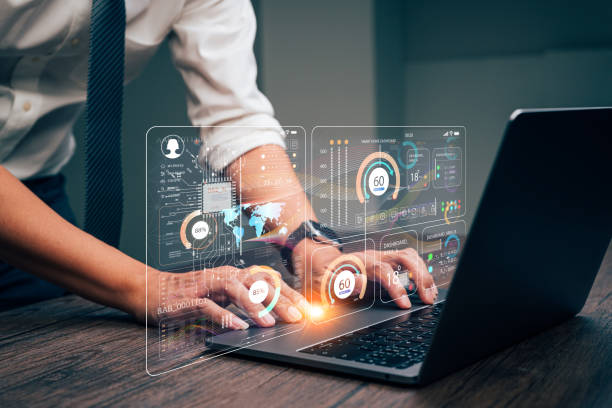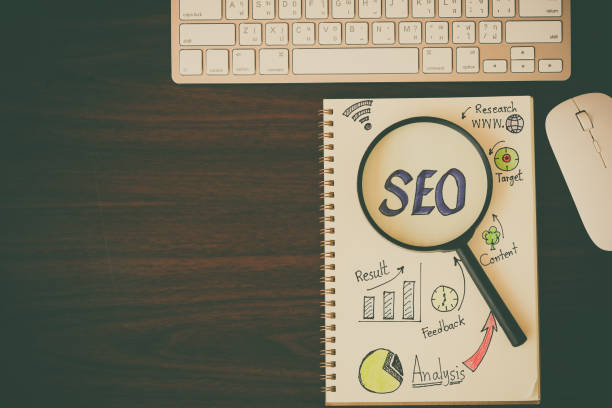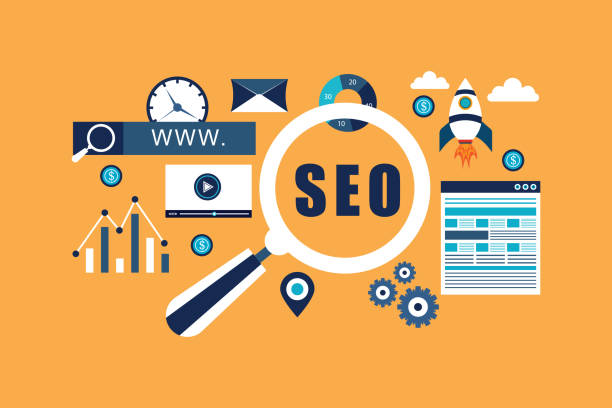What is Internal SEO and Why is it Important?

What is Internal SEO and Why is it Important?
#Internal SEO, also known as On-Page SEO, refers to the actions you take within your website to improve your site’s ranking in search engine results.
These actions include optimizing content, site structure, HTML tags, and other factors related to user experience.
Internal SEO is very crucial because it helps search engines better understand the topic of your website and show it to relevant users.
If internal SEO is not done correctly, even with the best content, you may not get a good ranking in Google.
One of the most important reasons for the importance of internal SEO is its direct impact on user experience.
When your site is well optimized, users can easily find the information they need and enjoy browsing your site.
This increases the time users spend on the site and reduces the bounce rate, both of which are important factors in Google’s site ranking.
Internal SEO optimization tells search engines what you are about and what your site’s content is about.
That’s why internal SEO is important.
Did you know that your customers’ first impression of your company is your website? Multiply your business credibility with a powerful corporate website from Rasaweb!
✅ Exclusive and eye-catching design tailored to your brand
✅ Improved user experience and increased customer acquisition
⚡ Get a free consultation!
Keyword Research, the Cornerstone of Internal SEO

Keyword Research, the Cornerstone of Internal SEO
Keyword research is the first and most important step in internal SEO.
Keywords are the phrases that users use to search for information in search engines.
You need to find keywords related to your business and use them strategically in your content.
There are various tools for keyword research, including Google Keyword Planner, Ahrefs, and SEMrush.
Using these tools, you can find popular and low-competition keywords.
After finding the right keywords, you should use them naturally in your titles, meta descriptions, body text, and ALT tags of your images.
Overusing keywords (Keyword Stuffing) not only does not help improve your site’s ranking, but may also cause your site to be penalized by Google.
In fact, the right internal SEO is to find relevant keywords and use them in the right place.
Keyword optimization is one of the important pillars of internal SEO. These pillars are the basis of site optimization.
Optimizing Titles and Meta Descriptions

Optimizing Titles and Meta Descriptions
Title Tags and Meta Descriptions are two important elements in internal SEO that are displayed in search results.
Titles should be attractive, relevant to the content, and include the main keyword.
Meta descriptions should also provide a summary of the page’s content and encourage users to click on your site’s link.
The length of titles should be less than 60 characters and the length of meta descriptions should be less than 160 characters.
Using keywords in titles and meta descriptions helps improve your site’s ranking, but you should avoid overuse of keywords.
Titles and meta descriptions should be written uniquely for each page of your site.
Avoid copying titles and meta descriptions from other pages.
Optimizing titles and meta descriptions plays an important role in internal SEO.
| Feature | Description |
|---|---|
| Title | Should be attractive, relevant, and include the main keyword. Maximum 60 characters. |
| Meta Description | Should be a summary of the page’s content and encourage users to click. Maximum 160 characters. |
Content Optimization, the King of Internal SEO

Content Optimization, the King of Internal SEO
Content is king! This phrase is very common in the world of SEO and shows the importance of content in improving site ranking.
Your content should be high quality, valuable, relevant to keywords, and attractive to users.
Avoid writing duplicate and copied content.
Update your content regularly so that search engines know that your site is active.
Use images, videos, and other visual elements to make your content more attractive.
Divide your content into smaller sections and use subheadings (H2, H3, …) to better organize the content.
Using internal and external links helps improve your site’s ranking.
Internal links help users easily browse your site, and external links show search engines that your site also links to other reputable sources.
Internal SEO can be well implemented with the help of quality content.
For internal SEO, creating quality content is a fundamental step.
Are you worried about losing customers who don’t have a professional online store?
Forget these worries by designing an online store with Rasaweb!
✅ Significant increase in sales and visitor-to-customer conversion rate
✅ Professional and user-friendly design that earns customer trust
⚡ Get free consultation from Rasaweb
Optimizing Images and Videos

Optimizing Images and Videos
Images and videos can help make your content more attractive, but you need to optimize them correctly to help improve your site’s internal SEO.
Use descriptive filenames for images and videos.
Use ALT tags to describe your images.
ALT tags help search engines understand what your image is about.
Use high-quality images and videos, but minimize file sizes so that your site’s loading speed is not reduced.
Upload your videos to video sharing platforms like YouTube and then embed them on your site.
Adding videos helps improve your site’s internal SEO.
URL Structure, an Important Role in Internal SEO

URL Structure, an Important Role in Internal SEO
The URL (Uniform Resource Locator) structure, or the address of web pages, plays an important role in internal SEO.
URLs should be short, descriptive, and include the main keyword.
Avoid using uppercase letters, numbers, and special characters in URLs.
URLs should refer to the logical structure of your site.
For example, the URL of a page about internal SEO should be something like this: example.com/seo/internal-seo.
It is recommended to use a hyphen (-) instead of an underscore (_) in URLs.
A proper URL structure helps search engines better understand web pages.
Site Loading Speed, User Experience, and SEO

Site Loading Speed, User Experience, and SEO
Site loading speed is one of the important factors in Google’s site ranking.
Users expect web pages to load in a few seconds.
If your site is slow, users will leave it, which increases the bounce rate and decreases your site’s ranking.
To increase your site’s loading speed, you can use various tools such as Google PageSpeed Insights and GTmetrix.
These tools help you identify and fix problems related to your site’s speed.
Some ways to increase site loading speed include: optimizing images, using CDN, enabling caching, reducing code size, and choosing a suitable hosting.
Internal SEO helps users by increasing site loading speed.
Also, site loading speed has a significant impact on internal SEO.
| Solution | Description |
|---|---|
| Image Optimization | Reduce image size without losing quality. |
| Using CDN | Using a Content Delivery Network to deliver content from servers near the user. |
| Enabling Caching | Temporarily storing information for faster loading on subsequent visits. |
| Reducing Code Size | Removing extra code and optimizing code. |
| Choosing Suitable Hosting | Choosing a web hosting service with high speed and sufficient resources. |
Mobile Optimization, a Must for Internal SEO

Mobile Optimization, a Must for Internal SEO
Today, more than half of web traffic is through mobile devices.
Therefore, optimizing the site for mobile is very important for internal SEO.
Your site should be responsive, meaning that it automatically adapts to the screen size of different devices.
Fonts should be readable and buttons should be large enough for users to easily click on them.
Site loading speed on mobile should also be high.
Since 2019, Google has introduced the Mobile-First Indexing algorithm, which means that Google considers the mobile version of your site for ranking.
Website optimization for mobile is an important part of internal SEO.
As a result, mobile optimization is very important for internal SEO.
Do you have an online store but your sales are not as you expect? Rasaweb solves your problem forever by designing professional online stores!
✅ Significant increase in conversion rate and sales
✅ Unparalleled user experience for your customers
⚡ Click to get free consultation with Rasaweb!
Internal Linking, the Key to Guiding Users and Search Engines

Internal Linking, the Key to Guiding Users and Search Engines
Internal linking means creating links between different pages of your site.
Internal links help users easily browse your site and help search engines better understand the structure of your site.
Internal links should be relevant to the content of the page and use descriptive anchor texts.
Avoid linking to pages that have similar content.
Internal linking can help improve your site’s ranking in Google.
A site with good internal linking shows that the site has a good structure and users can easily access the information they need.
Correct use of internal links improves internal SEO.
Monitoring and Analyzing Results, the Final Step of Internal SEO

Monitoring and Analyzing Results, the Final Step of Internal SEO
Internal SEO is an ongoing process and you should regularly monitor and analyze the results of your efforts.
Use tools like Google Analytics and Google Search Console to track site traffic, keyword rankings, and other important metrics.
By analyzing the results, you can identify the strengths and weaknesses of your internal SEO strategy and make the necessary changes.
For example, if you notice that a particular page is not receiving much traffic, you can optimize its title and meta description or update its content.
Internal SEO requires continuous monitoring.
By doing this, you help improve internal SEO.
Frequently Asked Questions
| Question | Answer |
|---|---|
| What is On-page SEO? | On-page SEO refers to the actions taken within your website to improve its ranking in search engine results. This includes optimizing content, site structure, and HTML code. |
| Why is On-page SEO important? | On-page SEO helps search engines understand your page’s content and determine whether your content is relevant to searchers. This is the foundation of any successful SEO strategy. |
| What are the key elements of On-page SEO? | Key elements include Page Title (Title Tag), Meta Description, Keyword Usage, Image Optimization, Heading Structure (H1, H2, …), Internal Linking, and Content Quality. |
| How to optimize the Page Title (Title Tag)? | The page title should include the main keyword, be attractive and encouraging to click, and its length should be between 50 and 60 characters (or a suitable pixel) to be fully displayed in search results. |
| What role does the Meta Description play in On-page SEO? | The meta description is a summary of the page content that is displayed below the title in search results. Although it does not directly affect ranking, it helps with SEO by increasing the click-through rate (CTR). |
| What is the importance of using a Heading Structure (H1, H2, H3) in On-page SEO? | Headings structure the page content and make it easier to read. H1 is usually the main title of the page and should include a keyword. H2 and H3 are used to organize subsections and help search engines understand the content hierarchy. |
| How to use keywords effectively in content? | Keywords should be used naturally and logically throughout the content, including the introduction, body, and conclusion. Avoid overfilling keywords (Keyword Stuffing). |
| What are the steps involved in optimizing images for On-page SEO? | It includes compressing images to reduce size, using descriptive filenames, adding appropriate alternative text (Alt Text), and optimizing image title and description. Alt Text is vital for accessibility and helping search engines understand the content of the image. |
| What is Internal Linking and what are its benefits? | Internal linking means creating links from one page on your website to another page on the same website. This helps users easily navigate your site, distributes page authority throughout the site, and helps search engines better understand your site structure. |
| What is the importance of content quality in On-page SEO? | High-quality, accurate, comprehensive and valuable content for users is the cornerstone of On-page SEO. Search engines prefer content that meets users’ needs. Quality content leads to longer dwell time and lower bounce rate, which are positive SEO signals. |
And other services of Rasa Web Advertising Agency in the field of advertising
Intelligent Data Analysis: Designed for businesses looking to improve SEO rankings through marketing automation.
Intelligent Customer Journey Map: Designed for businesses looking to grow online through user experience customization.
Intelligent Sales Automation: A combination of creativity and technology to increase click-through rate through a SEO-driven content strategy.
Intelligent Direct Marketing: An innovative service to increase SEO ranking by managing Google Ads.
Intelligent Marketing Automation: A professional solution for analyzing customer behavior with a focus on custom programming.
And more than hundreds of other services in the field of internet advertising, advertising consulting and organizational solutions
Internet Advertising | Advertising Strategy | Advertorial Report
Resources
Comprehensive Internal SEO Guide: Everything you need to know about On-Page SEO
,What is Internal SEO and Internal SEO Training
,Internal SEO Training (On-Page SEO): Comprehensive Site Optimization Guide
,What is Internal SEO (On-Page SEO) and Why is it Important?
? Are you looking for significant growth for your business in the online space? With unparalleled expertise in the field of digital marketing, from fast website design and optimization to comprehensive SEO strategies and content production, Rasaweb Aferin is your comprehensive solution for getting seen and attracting more customers.
📍 Tehran, Mirdamad Street, next to Central Bank, South Kazeroun Alley, Ramin Alley No. 6

